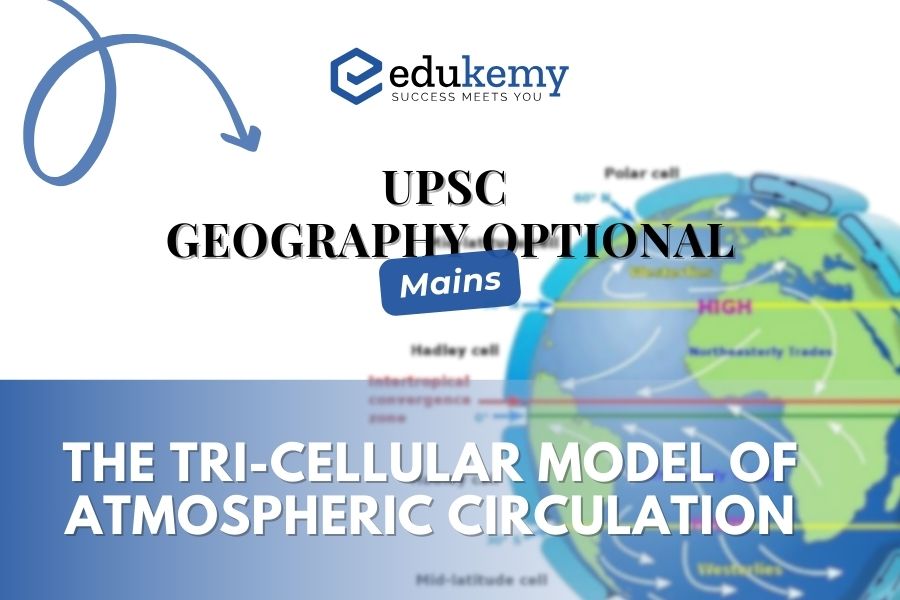
Delve into the intricacies of the tri-cellular model of atmospheric circulation, a fundamental concept in meteorology and climatology. This model divides Earth’s atmosphere into three distinct cells: the Hadley cell, Ferrel cell, and Polar cell. Each cell operates within specific latitudinal bands and plays a crucial role in redistributing heat and moisture across the globe. The Hadley cell, located near the equator, drives tropical weather patterns, while the Ferrel cell, situated between the Hadley and Polar cells, influences mid-latitude climates. Finally, the Polar cell, positioned near the poles, governs polar weather phenomena. Understanding the tri-cellular model offers valuable insights into the mechanisms driving global atmospheric circulation patterns, shaping weather systems and climate variability worldwide. Explore the nuances of this model, unraveling its significance in understanding Earth’s dynamic atmospheric processes.
Contents
Answer:
Introduction:
The tri-cellular model of atmospheric circulation is a conceptual framework used to describe the global patterns of air movement in the Earth’s atmosphere. It divides the atmosphere into three major circulation cells in each hemisphere: the Hadley cell, Ferrel cell, and Polar cell.
Body:
These cells play a crucial role in redistributing heat and moisture around the globe, influencing weather patterns and climate.
- Hadley Cell:
- Located near the equator, the Hadley cell is characterized by rising warm air.
- Solar radiation heats the Earth’s surface near the equator, causing warm air to rise and create a low-pressure zone.
- As the air rises, it cools, condenses, and forms clouds, leading to heavy precipitation in tropical regions.
- At higher altitudes, the air diverges toward the poles, creating the trade winds.
- The descending branch of the Hadley cell occurs around 30 degrees latitude, creating high-pressure zones and stable weather conditions, such as the subtropical deserts.
- Ferrel Cell:
- The Ferrel cell is located between the Hadley and Polar cells.
- It involves complex interactions between warm air rising from the subtropics and cold air sinking from higher latitudes.
- Air from the Hadley cell moves poleward and is deflected eastward due to the Coriolis effect, creating the westerly winds.
- As this air reaches higher latitudes, it cools and sinks, creating a zone of low pressure.
- The Ferrel cell is characterized by variable winds and weather patterns, including mid-latitude cyclones and fronts.
- Polar Cell:
- The Polar cell operates near the poles and involves sinking cold air.
- Cold air near the poles creates high-pressure zones, causing air to sink and flow toward lower latitudes.
- The sinking air creates polar easterlies, which blow from the poles toward the mid-latitudes.
- Warmer air from lower latitudes rises along the polar front, leading to the formation of polar cyclones and precipitation.
- The Polar cell completes the circulation loop by returning air back to the Hadley cell.

Conclusion:
With ongoing climate change, these circulation patterns may undergo alterations, leading to shifts in precipitation patterns, storm tracks, and temperature distributions. Studying these changes and their potential impacts on ecosystems, agriculture, and human societies is crucial for adapting to a rapidly changing climate and mitigating its adverse effects.
In case you still have your doubts, contact us on 9811333901.
For UPSC Prelims Resources, Click here
For Daily Updates and Study Material:
Join our Telegram Channel – Edukemy for IAS
- 1. Learn through Videos – here
- 2. Be Exam Ready by Practicing Daily MCQs – here
- 3. Daily Newsletter – Get all your Current Affairs Covered – here
- 4. Mains Answer Writing Practice – here

